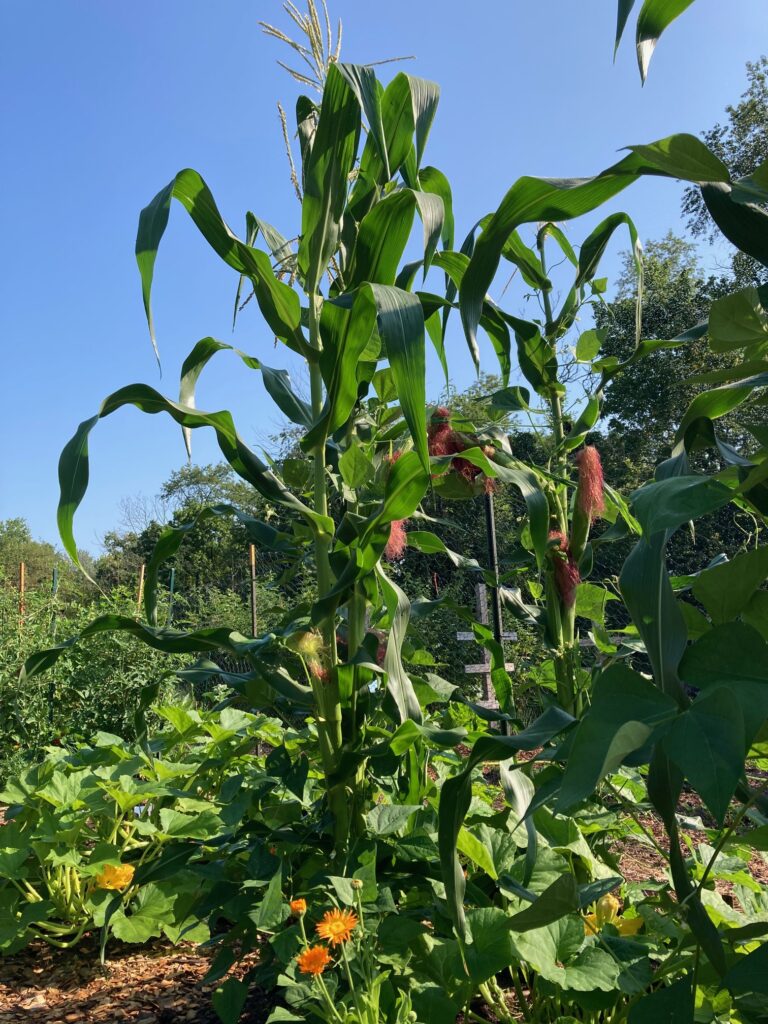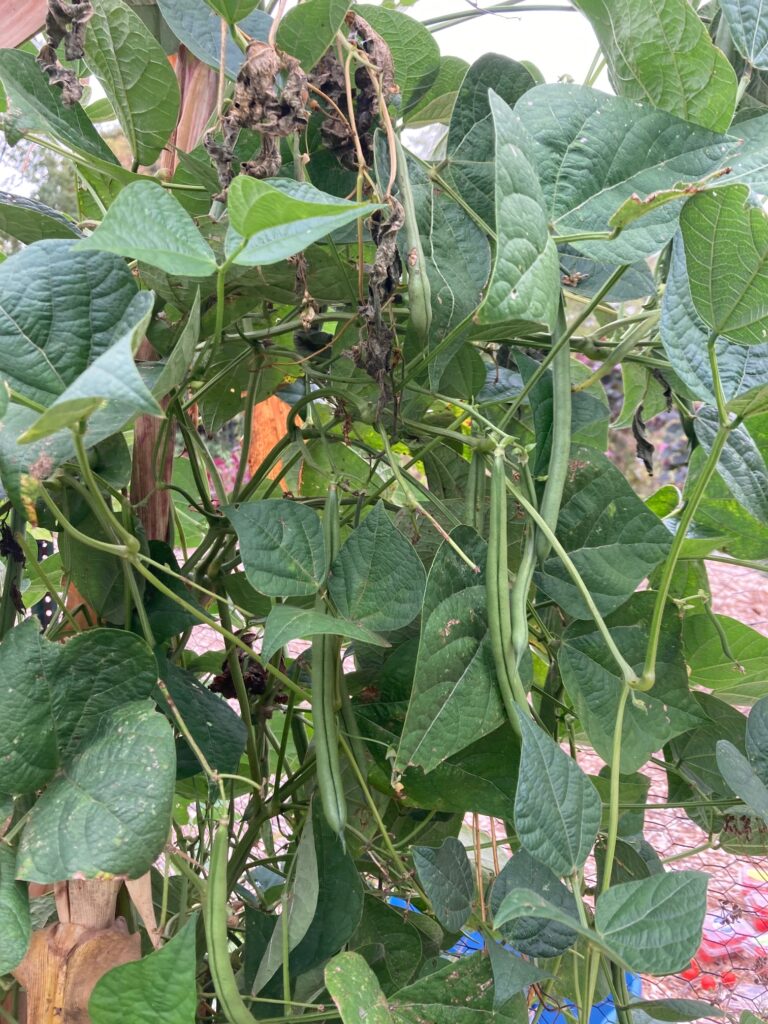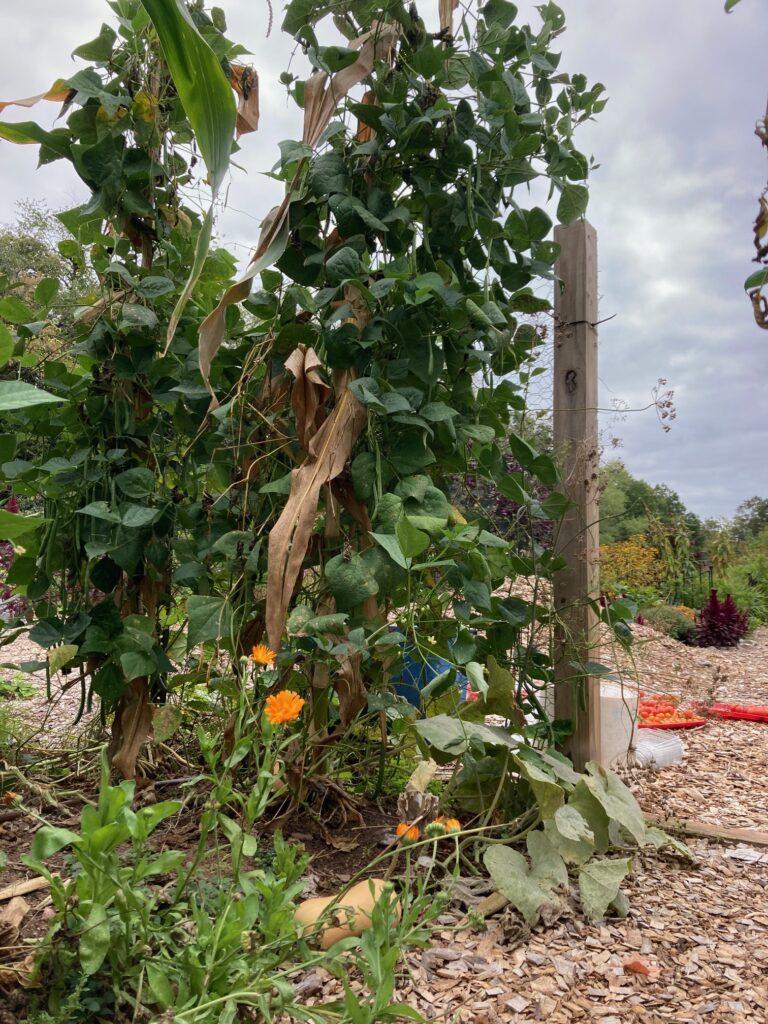Main Content
Written by Lorna F., Rutgers Master Gardener of Somerset County
Edibles Garden spotlight: Companion Planting
Companion planting seeks to grow plants together in the garden that may: benefit each other, repel insect pests from the garden, and/or attract pollinator and beneficial insects to the garden.
A classic example of companion planting is known as The Three Sisters. This Native/indigenous method of growing food combines corn, beans, and squash together. Corn stalks provide support for beans to climb. Beans enrich the soil for the corn, which needs lots of Nitrogen to grow. Squash rambles along the ground providing shade to cool roots and keep weeds down so they do not compete with the Sisters for nutrients and water. Add to your Three Sisters Garden by growing flowers like marigolds, sunflowers, or cosmos that attract pollinators and repel insect pests.
Here’s a few photos of our little Three Sisters Demonstration in our Teaching Garden.



We’ve planted:
- ‘Popcorn’ F1 Corn
- ‘Seychelles’ Pole Beans
- ‘Butterscotch’ Butternut Squash
- Cosmos, and Calendula.
Our corn stalks are shooting up by the day and our pole beans are starting to climb.
Click on these links for details and how-tos on Three Sisters and Companion Planting.
This summer in the Edibles beds of the RMGSC Teaching Garden we focused our garden design on companion planting.
So how did our Three Sisters plot grow?
Our ‘Popcorn’ (4 stalks) reached 8-10’ tall with a decent yield of ears. Ears have been harvested and are now drying to be used for popcorn.
‘Seychelles’ pole beans readily wrapped themselves up and around our cornstalks, climbing well to the top and spilling over and back down the stalks, and the yield and bean quality was phenomenal! At the time of this writing (October 6), bean production has slowed down, but the vines are still yielding well.
Our ‘Butterscotch’ semi-bush butternut squash (we had 3 vines) successfully vined in and around the corn stalks and acted as green mulch to shade corn and bean roots. Our bed was small (4’x6’), so some vines did climb out of the bounds of the bed. We also had problems in our Edibles beds this season with powdery mildew on our squash, as weather conditions mid-late summer were favorable for its development (humid nights & warm, dry days). While this fungal disease did not outright kill any vines, it certainly reduced their vigor and yield. But we are happy with our modest harvest of small butternut squash.
Lessons to be learned:
A Three Sisters plot is an enjoyable way to practice companion planting in home veg gardens.
Our plot could have used a bit more space to allow more room for the butternut to grow and more air circulation and sunlight to reduce fungal disease development and spread.
The many companion flowers (nasturtium, calendula, nasturtium, cosmos, borage) we interplanted with the Edibles/Three Sisters led to a garden that was regularly buzzing with pollinators and ensured large harvests.